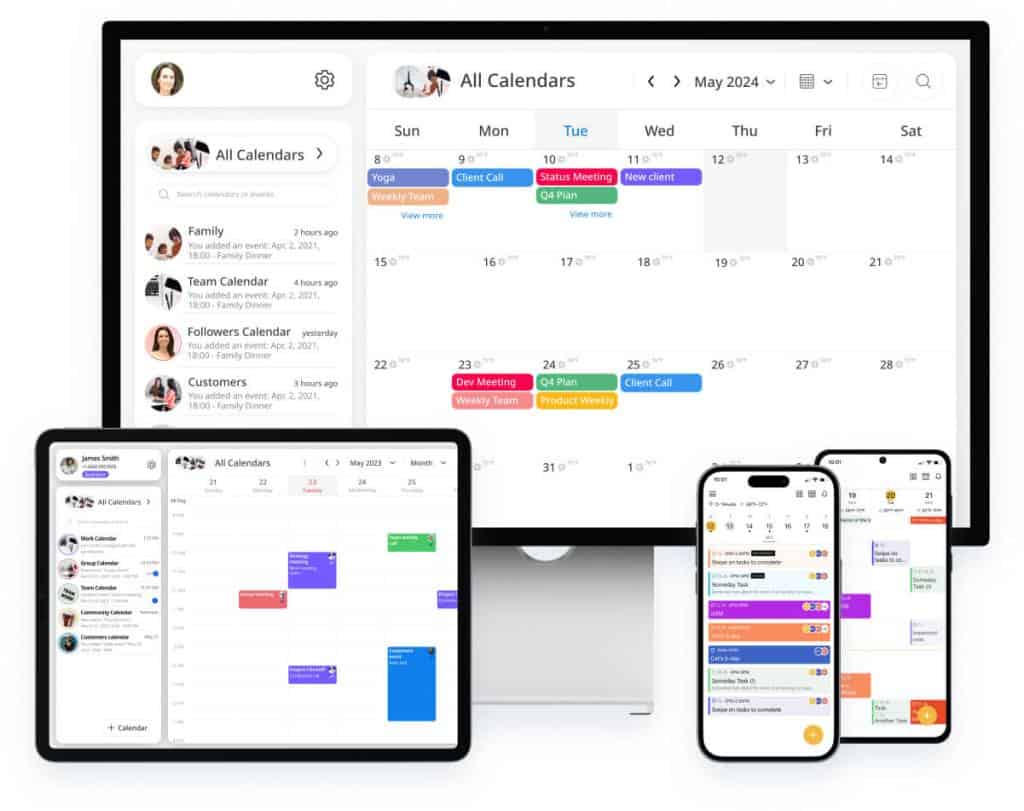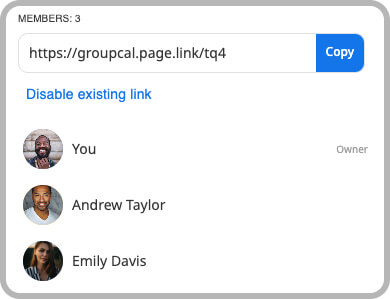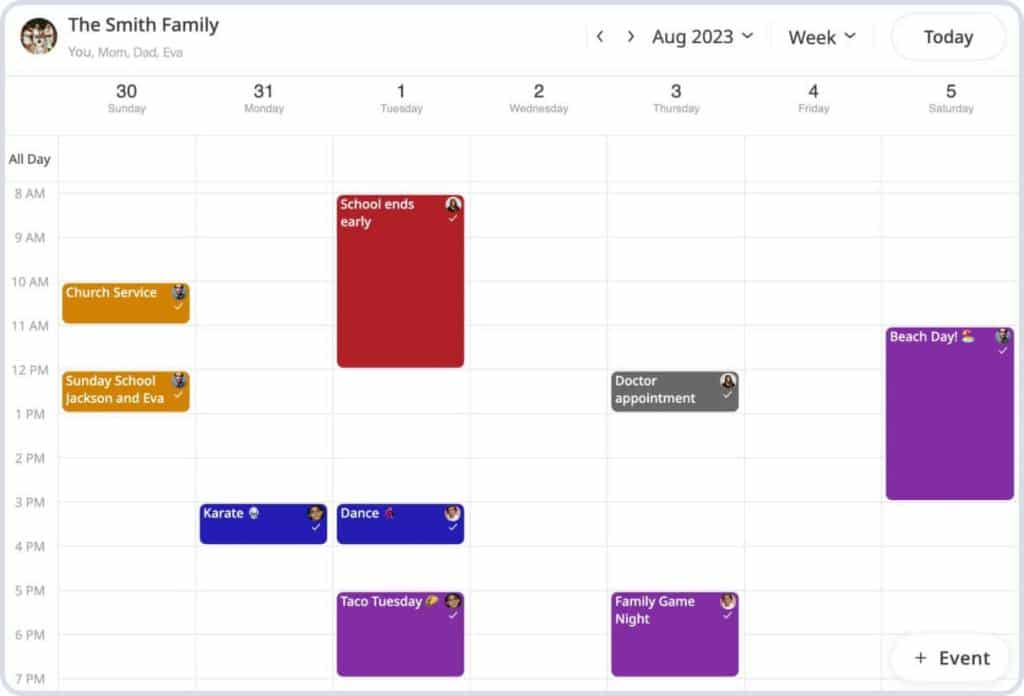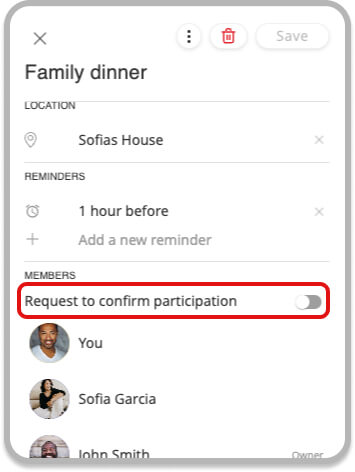
GroupCal is a powerful shared calendar platform designed to facilitate efficient schedule management and collaboration for groups of all kinds. Whether you’re part of a team, organization, or family, GroupCal offers a range of features and tools that streamline the process of coordinating schedules and events. In this post, we will explore several specific tips on how to effectively utilize GroupCal to manage a group calendar. By implementing these strategies, you can enhance coordination, organization, and productivity within your group, ensuring that everyone stays on the same page and can contribute to a well-coordinated schedule.
What is a Group Calendar and why do you need a shared calendar to manage your group schedule?

Effective group management is crucial for the success and productivity of any team or organization. Whether you’re working on a project, organizing an event, or coordinating a team, keeping everyone on the same page can be a challenging task. One of the biggest hurdles in group management is the coordination of schedules among team members.
In a small business, effective coordination and schedule management are crucial for smooth operations and task completion. A shared calendar solution, such as GroupCal, becomes essential in enabling teams to efficiently manage their schedules and tasks collaboratively. Consider a small business like an installation company with a team of installers who need to be assigned to different jobs throughout the day. In such a scenario, the business owner needs a centralized system to assign jobs and maintain a shared calendar that lists all the jobs and associates them with the respective installers. This ensures that each installer knows their assigned tasks, the schedule is optimized, and conflicts are minimized. Additionally, the management team benefits from visibility into the company’s schedule, allowing them to make informed decisions, allocate resources effectively, and track the progress of projects. Other functions within the company, such as operations employees, also benefit from access to the schedule. They can quickly access job details, including contact information, to coordinate any necessary changes or send reminders.
Similarly, consider a student organization on a university campus. They have various events, meetings, and activities that require the participation of multiple members. With everyone’s busy schedules, it becomes difficult to ensure that all members are available and can actively contribute to the group’s initiatives.
Furthermore, let’s consider a family that consists of parents and children. With each family member having their own commitments, it can be challenging to coordinate family gatherings, school assignments, doctor appointments, and important occasions. A shared calendar, such as GroupCal, provides a centralized platform where all family members can access and update their schedules. This ensures that everyone is aware of upcoming events, appointments and deadlines, which promotes effective communication within the family unit.
In these scenarios, a shared calendar emerges as an invaluable tool for effective group management. A shared calendar provides a centralized platform where team members can view, update, and coordinate their schedules collaboratively. It eliminates the need for lengthy email chains, confusing spreadsheets, or constant back-and-forth communication.
In the following paragraphs, we will explore the benefits of using a shared calendar for group management. Additionally, we will provide you with five practical tips to effectively manage your group using a shared calendar. By implementing these tips, you can streamline your group’s operations, foster better communication, and boost overall productivity. So, let’s dive into the five tips for managing your group with a shared calendar, and discover how this powerful tool can revolutionize your group management practices.
5 tips for managing your group calendar:
Have all group members join a shared calendar platform

The first step in effectively managing a group with GroupCal is to ensure that all group members join the platform. By doing so, they can access and view the shared calendar with all the events. This enables real-time updates and ensures that everyone stays informed about the group’s schedule. GroupCal’s user-friendly interface makes it easy to invite others to join and collaborate by simply sending them a link. Additionally, GroupCal is cross-platform, allowing members to access the calendar from their iOS and Android mobile devices, as well as from their computers. This flexibility ensures that everyone can conveniently access the shared calendar and stay connected wherever they are.
Mark who is responsible for each event

Understanding which events are associated with each group member is important for several reasons. Firstly, it helps clarify responsibilities and minimizes confusion, particularly when multiple events occur simultaneously. By assigning clear ownership to each member, tasks can be effectively reviewed, managed and executed without overlaps or misunderstandings. Secondly, it promotes accountability within the group. When everyone can easily identify who is responsible for a specific event, it becomes simpler to address questions, provide updates, and seek assistance if needed.
In a family context, a shared calendar becomes invaluable for keeping track of various activities and commitments. By assigning events to specific family members, such as parent-teacher meetings, extracurricular activities, or household chores, it becomes easier to identify and distribute responsibilities within the household.
Within an educational setting, a class schedule benefits from the practice of assigning colors to different types of events. For instance, using distinct colors for assignments, classes, and exams allows students and teachers to quickly identify and prioritize their tasks, enhancing organization and time management.
In a team or work environment, assigning different colors to events based on team members can greatly improve coordination and task management. For example, a marketing team can assign specific colors to events related to each team member’s responsibilities, such as content creation, social media management, or campaign planning. This visual distinction enables team members to readily identify their tasks, work collaboratively, and stay aligned.
GroupCal offers a seamless solution for indicating ownership of events. Each member can add their name and photo to their profile, and then GroupCal will display the photo of the event owner, on top of each event, providing a visual cue for identification. Additionally, the ability to assign a unique color to each member ensures that events are marked with the respective member’s color in the shared calendar, facilitating easy recognition of event ownership and fostering efficient collaboration within the group.
Establish clear guidelines and permissions

Defining roles and permissions within a shared calendar is essential to maintain order and prevent any potential mistakes such as when a member of the calendar mistangly updates or removes events. By determining who has the authority to add, edit, or delete events, you establish a clear hierarchy and ensure that the calendar remains organized and accurate. This becomes particularly crucial in groups where individuals have different responsibilities or access levels.
For example, in a project management team, the project manager might be granted full control over the calendar, while team members have limited editing rights. This ensures that the project manager can oversee and make necessary changes without the risk of unintended modifications from other members. This structured approach streamlines collaboration and helps maintain the integrity of the shared calendar.
Another example can be seen in a small business team, where the boss assigns tasks or assignments to employees. In such a scenario, it is crucial that the boss has exclusive editing rights to events to prevent confusion and maintain the authoritative role. This way, the boss can make updates or adjustments to events without any unintended interference, preserving the clarity and direction of the team’s workflow.
By establishing clear guidelines and permissions, you provide a framework that outlines each member’s responsibilities and limitations when interacting with the calendar. This promotes smooth collaboration, minimizes errors, and ensures that everyone understands their roles in maintaining the accuracy and integrity of the shared calendar.
GroupCal provides features that facilitate the establishment of roles and permissions within a shared calendar. With GroupCal, you can assign admins to the calendar who have the authority to manage and make changes to events. This ensures that the responsibility of maintaining the calendar lies with a designated group of individuals who can effectively coordinate and organize the events.
Furthermore, GroupCal allows you to set permissions that restrict event modifications to only the admins. This means that only those with admin privileges can add, edit, or delete events, while other members have limited editing rights or are restricted to viewing the calendar. By implementing this permission structure, GroupCal ensures that only authorized individuals can make changes, reducing the risk of accidental modifications or unauthorized alterations.
Use RSVP when needed

For events that require attendance confirmation, GroupCal provides a convenient RSVP functionality superior to RSVP mechanisms available in traditional calendar apps. This feature is especially valuable for groups where knowing the attendance status is essential, such as team meetings, client appointments, or social gatherings. With GroupCal, you can easily determine which events will require RSVP by toggling that functionality ON on the event info popup. The calendar will then display RSVP status indicators directly on the event itself. GroupCal utilizes a mechanism similar to popular instant messaging apps like WhatsApp and Apple Messages. Just like the ticks that track message delivery and response, GroupCal shows ticks on each event to indicate whether all members have received the event and whether they have responded. This feature provides real-time visibility into the RSVP status, ensuring that event organizers as well as all the members can easily track the aggregated attendance status, and make informed decisions based on the responses received. Additionally, GroupCal provides an event information popup where all members are listed with their individual RSVP status. This granular level of detail allows everyone to have a clear understanding of who has confirmed their attendance, who is tentative, and who is unable to attend.
Use descriptive event titles and details
When creating events on the shared calendar, make sure to use descriptive titles and provide relevant details. This includes information such as the location, agenda, and any necessary attachments or links. Utilize the bullet point notes or description section to attach relevant information. By doing so, you enable group members to quickly understand the purpose and context of each event without the need for further clarification. This promotes efficiency, reduces confusion, and ensures that everyone has access to all the important information related to each event.
Implementing these five tips for managing a group with a shared calendar can significantly enhance collaboration, organization, and productivity within your group. By having all members join the shared calendar platform, indicating event ownership, establishing clear guidelines and permissions, using RSVP when needed, and providing descriptive event titles and details, you create an efficient and transparent system for scheduling and coordinating activities for both individual use or business use . Maximize the benefits of a shared calendar by implementing these tips and experience streamlined group management like never before.